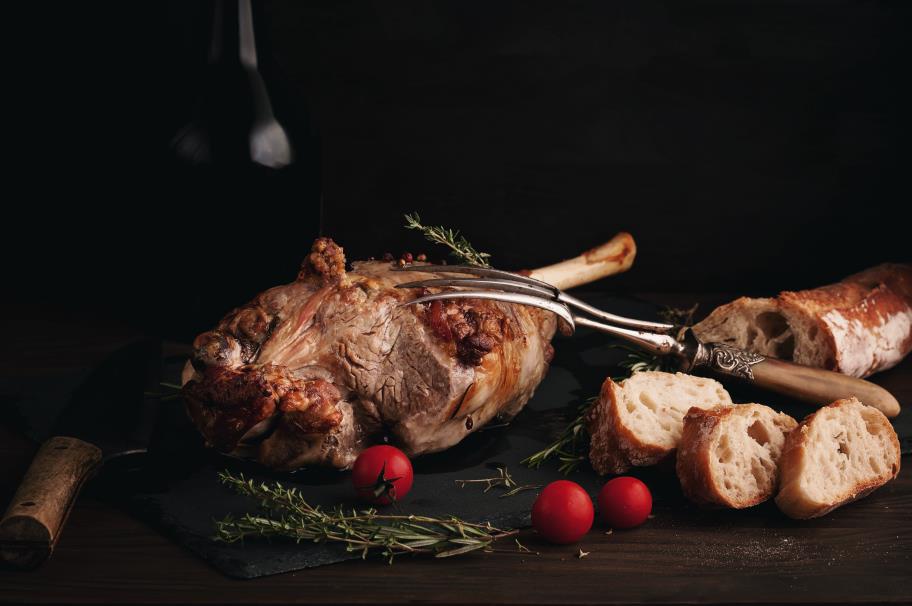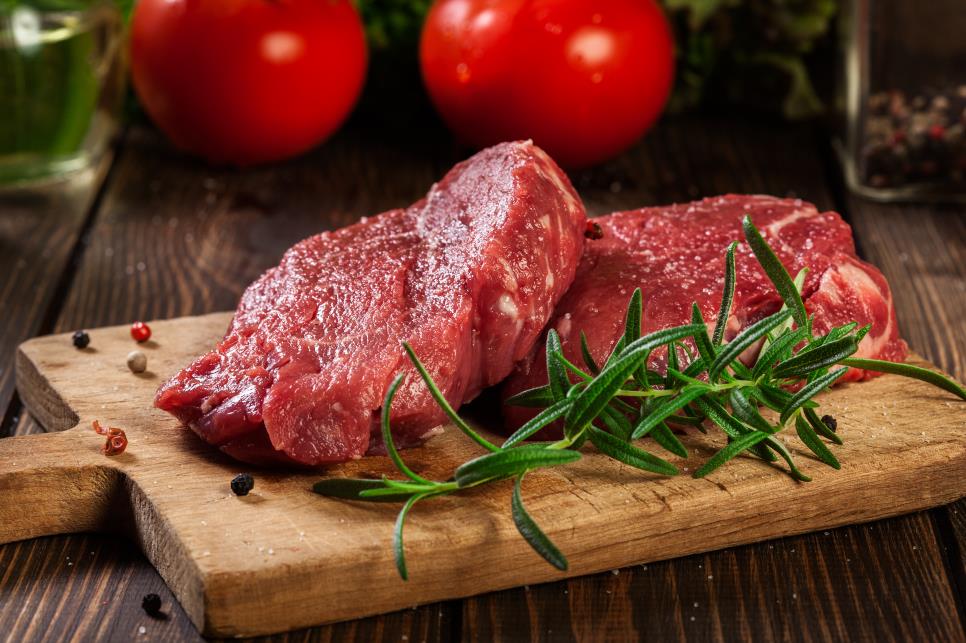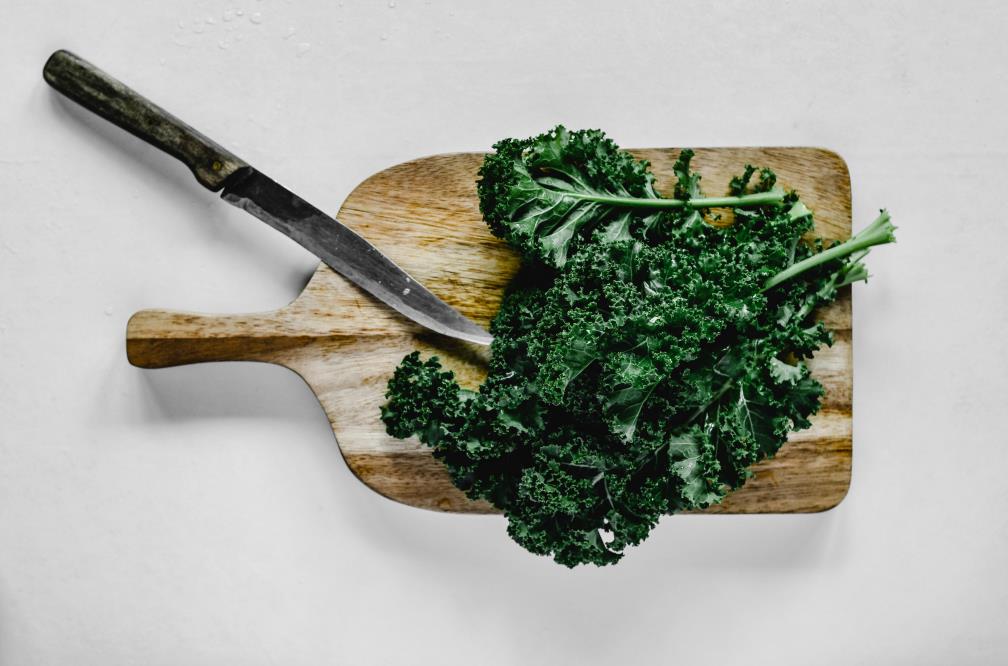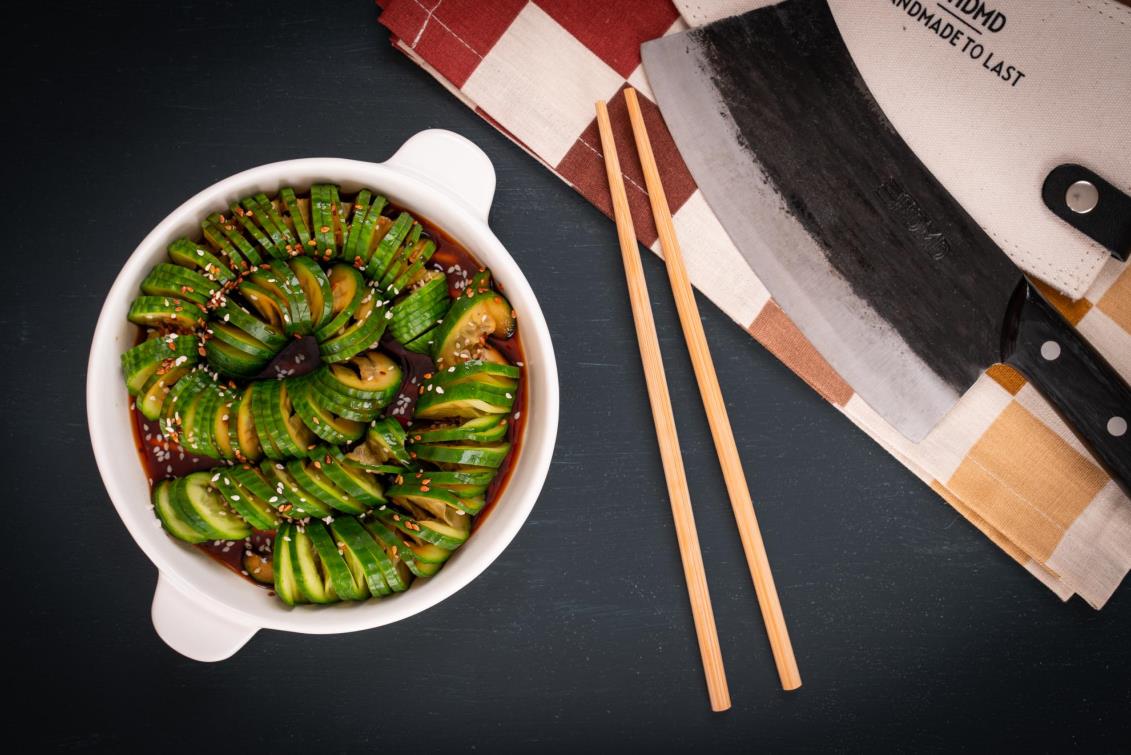Cilantros add a refreshing burst of herb-goodness to the simplest of dishes and breathe new life into them. Chefs add it to their dishes to make them pop, giving a signature aroma hard for anyone to ignore. If you love cilantro just as much as we do, it’s time to have some fun with them.
Let us learn how to cut cilantro to get the most out of this aromatic herb. You can add freshly cut cilantro c to your favorite pesto sauces, salsas, and pretty much any dish that loves a good garnish. Let’s begin.
How to cut cilantro:
- Rinse the cilantro well and pat dry.
- Cut off the long stems to the desired length.
- Use a sharp knife to cut the cilantro in a rocking motion.
- Run them over again for a finer chop.
- Run the knife through the chopped cilantro with the knife tip as your pivot for mince.
We will talk more about how to cut cilantro later in the article. But first, what is cilantro anyway?
Table of contents
What is cilantro?
Cilantro is a fragrant, leafy green herb that belongs to the parsley family. They are delicate, fresh leaves (and stems) of the Coriandrum sativum plant. The leaves of cilantro are flat leaf-like structures with long and tender stems. Also known as Mexican or Chinese parsley, this herb is widely used in Asian, Middle Eastern, and Central American cuisines.
Cilantro is known to be a polarizing herb- you will either love it for its lemon-like, pungent and peppery taste or hate it and find it soapy. There is no in-between. You might blame the hate on your genes, though. Nevertheless, it is one of the most widely used herbs globally, which is generally used as a garnish owing to its delicate structure.
Are cilantro and coriander the same?
Is cilantro the same as coriander? Well, it depends on where you live. In the US, cilantro is known to be the leaves and stems of the coriander plant, while coriander itself refers to the dried seed that comes from the plant. Meanwhile, the rest of the world knows cilantro as coriander, while the seeds are called coriander seeds.
Preparing cilantro
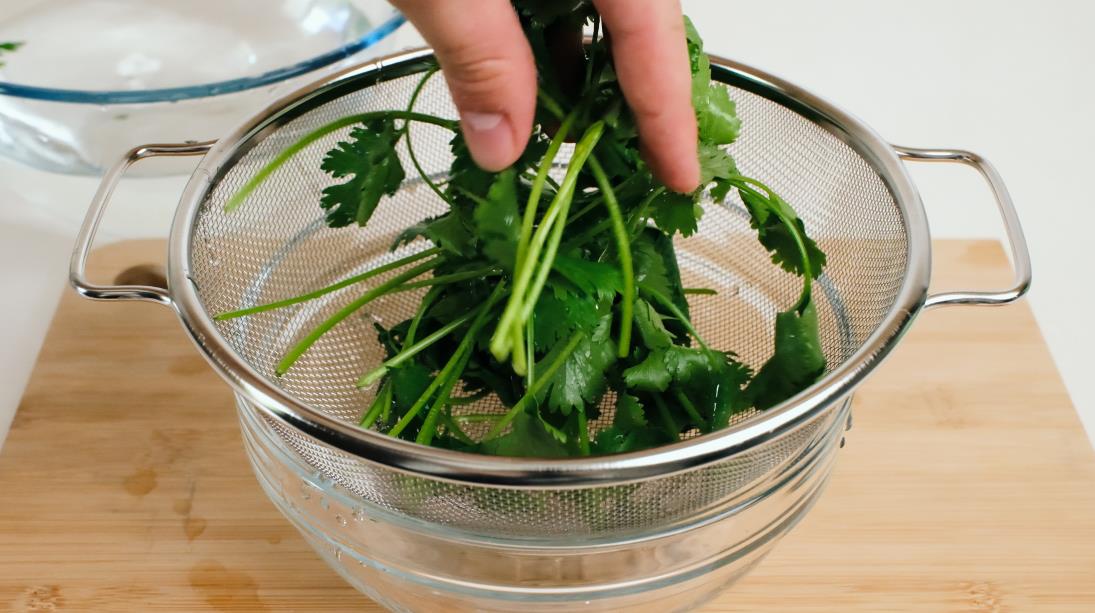
Put your cilantro in a colander and run it under cold water. Move the cilantro around as water runs over it to loosen any dirt. Rinse it well. While the cilantro is still in the colander, shake it to remove any excess water.
Next, place the cilantro on a paper towel to absorb the remaining water from the cilantro. Now you need to make sure that your cilantro is ready for cutting. For this purpose, you must look out for and pluck any discolored or wilted leaves that you may find. Your cilantro leaves are all prepped by now.
Tools needed
Cutting up cilantro is easy once you know how to. The first absolute must requirement for cutting up cilantro is a sharp chef knife. A sharp knife is vital because cilantro leaves are delicate and can only be appropriately cut if your knife is sharp. Otherwise, you will simply be mushing the leaves altogether. It would also help if you had a good cutting board. Lastly, you require a bunch of cilantro (no surprises there).
Handpicked for you
True cutting power in the palm of your hand
How to cut cilantro
To begin cutting cilantro, use a sharp knife to cut up the long stems that don’t have any leaves. These stems are usually thicker and make up 2/3rd of the cilantro. You may prefer to cut more or less of these stems depending on the dish you’re making and the texture and taste you desire.
Salsas and curries make well use of the cilantro stems and give them a strong flavor. Other dishes such as Pico de Gallo are better without the stems and only make good use of the leaves.
How to chop cilantro (for tacos)
Lay the cilantro onto the cutting board. Using your dominant hand, rock your knife up and down the cilantro bunch from one end to the other. Simultaneously, use your non-dominant hand to gather the un-chopped leaves closer to the blade. Continue till all the cilantro leaves are chopped.
Depending on your preference and dish requirements, you may chop them roughly or finely. Turn the leaves at 90 degrees for a finer chop, gather them, and repeat the chopping procedure.
How to mince cilantro (for salsas)
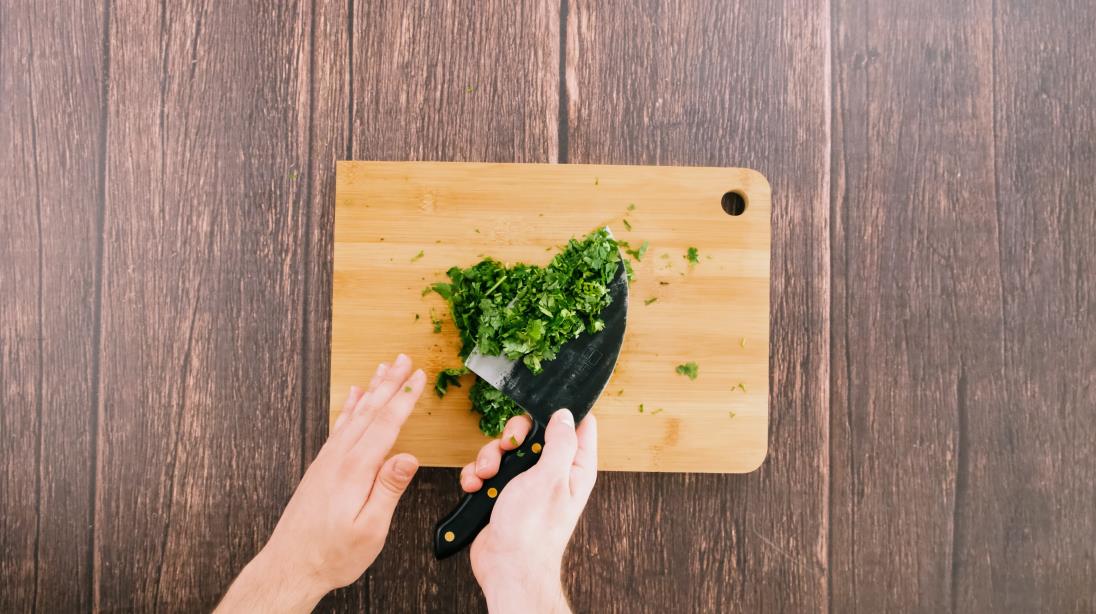
For smaller mince of the cilantro bunch, chop the cilantro as described above. Next, go over the chopped cilantro pile with the sharp knife in your dominant hand. Use your non-dominant hand to hold the knife tip with your fingers as you move the blade up and down all through the bunch. This method will give you a pile of finely minced cilantro.
Cilantro nutritional benefits
You might be surprised to know that these herbs are not just color and flavor but also hold nutritional value. Cilantro leaves are known to provide you with Vitamin K that aid bone health and wound healing. Moreover, the two vitamins known to boost immune function are also present. These vitamins are Vitamin A and C.
What’s more, they also have antioxidants and aid cardiovascular health. However, since we consume only small amounts of leave, we may not be able to realize the benefits in their entirety.
FAQs
How do you store cut cilantro leaves?
To store cut cilantro, place them loosely in a layer of clean paper towel. Use a few more layers for more leaves. Next, please place them in an airtight container and store them in the refrigerator. Storing this way will keep them fresh for about two weeks.
How do you store uncut cilantro leaves?
Fill a jar or glass with a few inches of water. Immerse the cilantro stems in the water. Next, cover the cilantro bunch with plastic and tie a knot to hold the plastic in place. Store in refrigerator. Change the water if it gets cloudy if needed. This way will last your cilantro leaves for about three weeks.
Do you chop cilantro stems?
Cilantro stems are usually discarded as they have a stronger flavor and a woody texture. Therefore, they are usually cut off even though they can be eaten. If any dish calls for stems, simply cut the larger and thicker ones and chop the rest.
Can cilantro be frozen?
Cilantro can indeed be frozen. Simply put your bunch in zip-lock freezer bags after washing and drying them. Toss in the freezer at 0℃ until you’re ready to use. Cilantro stored like this will last you for six months.
In conclusion
Now that you’ve polished your cilantro cutting skills, it’s time to try some cilantro recipes. Make sure you compost those stems, though. What are you waiting for? A sharp knife? Try ours at HDMD; you will not be disappointed. Until next time.







